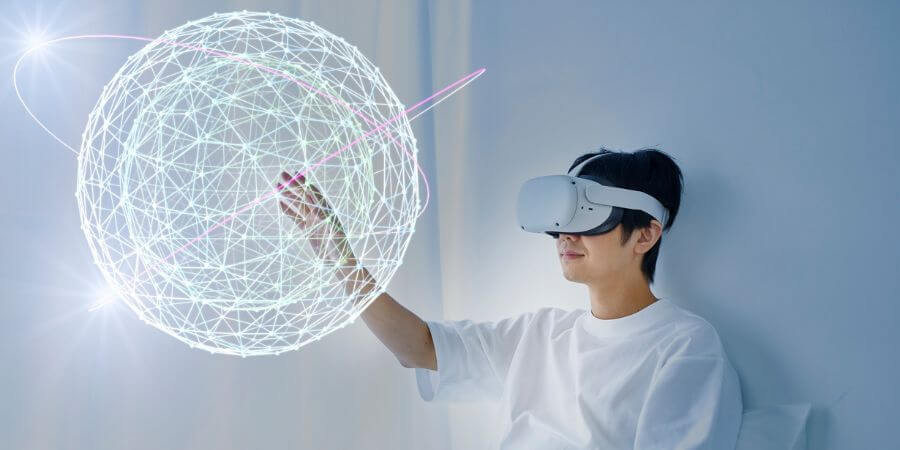Future Directions in Neuromodulation: Guiding the Next Generation of Neural Science
New-generation trends in neuromodulation are revolutionizing how we understand and treat neurological disorders, psychiatric conditions, and chronic pain. With increasing convergence between technology and neuroscience, this new science is breaking away from traditional treatments to deliver customized, aimed, and non-invasive therapies that can transform the lives of millions. From brain implants that adapt to artificial systems based on AI, a future of improved, safer, and more integrated healing of the human nervous system beckons us.
1. Evolution of Neuromodulation: A Brief Overview
Neuromodulation is the use of electrical, magnetic, or chemical stimulation to regulate nervous system activity. Experimentation with spinal cord stimulation decades ago has evolved into a mainstay of contemporary medicine today. Today, it is used in the treatment of chronic pain, Parkinson’s disease, epilepsy, depression, and obesity.
The future directions for neuromodulation indicate an era of smarter, smaller, more individualized devices. Research today is focused on adaptive systems that will respond in real time to neural signals, optimizing therapy for individual patients.
2. Personalized Medicine with AI and Machine Learning
Artificial intelligence (AI) and machine learning (ML) are among the most groundbreaking forces driving neuromodulation trends of the future. AI and ML are assisting in developing predictive analytics and adaptive feedback loops that automatically adjust levels of stimulation based on a patient’s unique neural responses.
Algorithms based on AI can process complex brain data, enabling doctors to quickly identify optimal parameters with greater accuracy. This not only enhances the efficacy of therapy but also decreases side effects—paving the way for a new paradigm for personalized neurotherapeutics.
3. Miniaturization and Wireless Implants: Neuromodulation Made Easy
Miniaturization of medical devices is also one of the lines of the future in neuromodulation. Engineers are working on extremely tiny, wireless implants that deliver stimulation with minimal equipment. Next-generation implants reduce surgical risks, increase comfort, and reveal long-term treatments.
Wireless neuromodulation devices can also be externally powered or controlled through external devices, offering more convenience and reducing the need for constant replacement or adjustment. The result is even greater integration of digital technology with human biology.
4. Beyond the Brain: Peripheral and Vagus Nerve Innovations
As brain stimulation continues to be at the core of neuromodulation, new technologies are targeting the peripheral nervous system for treatment. Vagus nerve stimulation, for instance, is becoming increasingly popular for the treatment of depression, anxiety, and inflammatory disorders.
Upcoming neuromodulation devices will feature multiple-target stimulation, enabling physicians to modulate multiple neural circuits at once. These developments open up the therapeutic potential to immune system modulation, cardiac control, and even metabolic management.
5. Closed-Loop Systems: The Future of Adaptive Therapy
Among the typical directions of the future of neuromodulation is the trend toward closed-loop systems. Unlike traditional open-loop devices delivering preprogrammed stimulation, closed-loop neuromodulation dynamically monitors neural activity and adapts output in real time.
For example, in Parkinson’s disease, closed-loop DBS can automatically adjust stimulation based on the movement patterns or brain signals of the patient. This results in more accurate control, better symptom correction, and fewer side effects—taking a grand leap towards intelligent neural therapies.
6. Non-Invasive Neuromodulation: Opening Up Accessibility
Non-invasive neuromodulation is also moving rapidly forward with transcranial magnetic stimulation (TMS), transcranial direct current stimulation (tDCS), and focused ultrasound technology. These therapies are making neuromodulation accessible to patients who cannot be treated by surgical implantation.
As increasingly powerful devices become portable and user-friendly, one day patients may be able to receive personalized therapy in the comfort of their own homes—a heart-stopping step toward democratizing neurological therapy.
7. Neuroethics and Data Protection in the Future of Neuromodulation
With data-driven treatments becoming more common, the future paths of neuromodulation also challenge privacy, consent, and the ethical use of neural data. Brain-computer interfaces (BCIs) collect sensitive information that must be processed ethically and securely.
Regulatory frameworks are evolving to drive safety, protect patient rights, and ensure balance between innovation and accountability. With neuromodulation technology becoming ever more intertwined with AI and cloud computing, ethical regulation will be the key to preserving public trust.
8. Integrating with Brain-Computer Interfaces (BCIs)
The combination of neuromodulation and brain-computer interfaces is perhaps the most revolutionary trend of all. BCIs are no longer science fiction—now they’re an attainable solution for restoring the capacity to communicate, move, and live independently to those with paralysis or neurologic trauma.
When combined with neuromodulation, BCIs promise to create a bidirectional communication channel for external devices and the brain. This union could revolutionize rehabilitation, allowing patients to regain mobility and control through intelligent neural feedback systems.
9. The Role of Regenerative Medicine and Gene Therapy
Yet another revolutionary avenue for next-gen trends in neuromodulation is the union of gene therapy and regenerative medicine. Scientists are discovering ways to not just stimulate neurons but also repair or regenerate them.
Gene editing technologies like CRISPR, combined with neuromodulation, could potentially be utilized to repair damaged neural circuits from trauma, stroke, or neurodegenerative conditions. This convergence of biology and technology promises a future where the nervous system can be repaired and also enhanced.
10. What the Future Holds: Smarter, Softer, and More Human-Centric Devices
Looking ahead to the future, the trends in neuromodulation have a vision: smarter systems, softer interfaces, and more human-centered design. Soft bioelectronics that can shape themselves around tissue, energy-efficient chips, and cloud-connected platforms will define the next generation of therapeutic devices.
Ultimately, the future of neuromodulation is not merely curing disease—it’s enhancing quality of life. Through closing the gap between technology and human consciousness, neuromodulation can potentially unlock new horizons of health, recovery, and human potential.
Conclusion: The Dawn of Intelligent Neurotherapy
The future of neuromodulation is one of break-through trends, and the future is already here. With AI-enabled personalized medicine, implant miniaturization, and ethics-driven innovation, neuromodulation is shaping up as the most thrilling medical frontier on the horizon. With science going deeper and access increasing, the formerly futuristic technologies will be mainstreamed into medicine—reimagining the healing of the mind, body, and human spirit.






